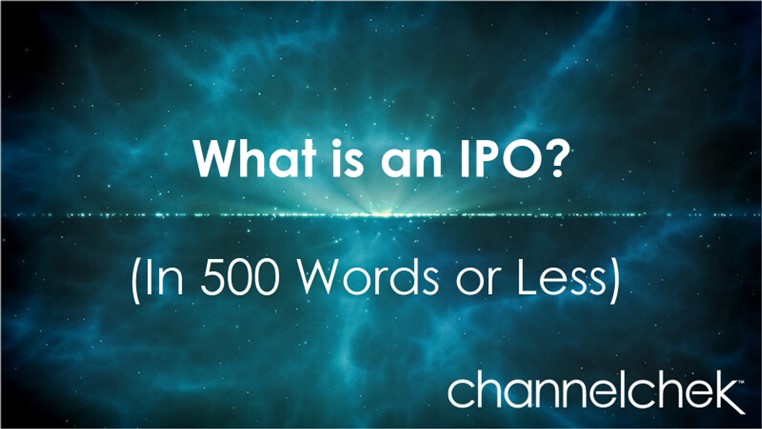Initial Public Offerings (IPO) Can be Considered a Ground Floor Opportunity
When a private company, one not yet traded on any stock exchange, first offers shares of its company for purchase, this process is known as an initial public offering (IPO). It is a transfer of ownership which provides a method for the company to raise capital by selling all or part of the business by becoming a publicly traded corporation.
The IPO process is sometimes referred to as “going public.”
To bring a company public through an IPO, management chooses a lead underwriter, often an investment bank. The underwriter provides expertise with the securities (stock shares) registration process and distribution of the shares to the public. The lead underwriter then assembles a group of investment banks and broker-dealers (a syndicate) that is responsible for selling shares of the IPO to institutional and individual investors.
Participating in an IPO
To participate in an IPO, you agree to purchase shares of the stock at the offering price before it trades on the secondary market. Your indication of interest as a potential investor helps set the initial offering price.
Your broker will require standard guidelines to be met to determine if you meet SEC rules to qualify as a “qualified investor.” If you are eligible, you may be asked if you’d like to be signed up for new IPO alerts.
If an investor has done their own due diligence and has been allocated shares in an IPO, it is important to understand that while they are free to sell shares obtained through an IPO whenever they deem appropriate, many firms will restrict eligibility to participate in future offerings to those that sell within the first several days of trading. The practice of quickly selling IPO shares is known as “flipping,” and it is something most firms discourage.
Considerations
Before investing, be sure to do basic research. This can be challenging because of the lack of information on non-public companies. The company’s preliminary prospectus is provided by the issuer and lead underwriter. It includes information on the company’s management team, target market, competitive landscape, recent financials, who is selling shares in the offering, who currently owns shares, anticipated price range, potential risks, and the number of shares to be issued.
Qualified Investor
The overall guidelines as to who qualifies to participate in IPOs are fairly standard. One way to determine if you may meet the guidelines is by providing confidential information here.
Managing Editor, Channelchek
Suggested Content
 Placing a Bid to Own a Public Company
|
 Small-Cap Stocks and How They’re Different
|
Stay up to date. Follow us:

|

